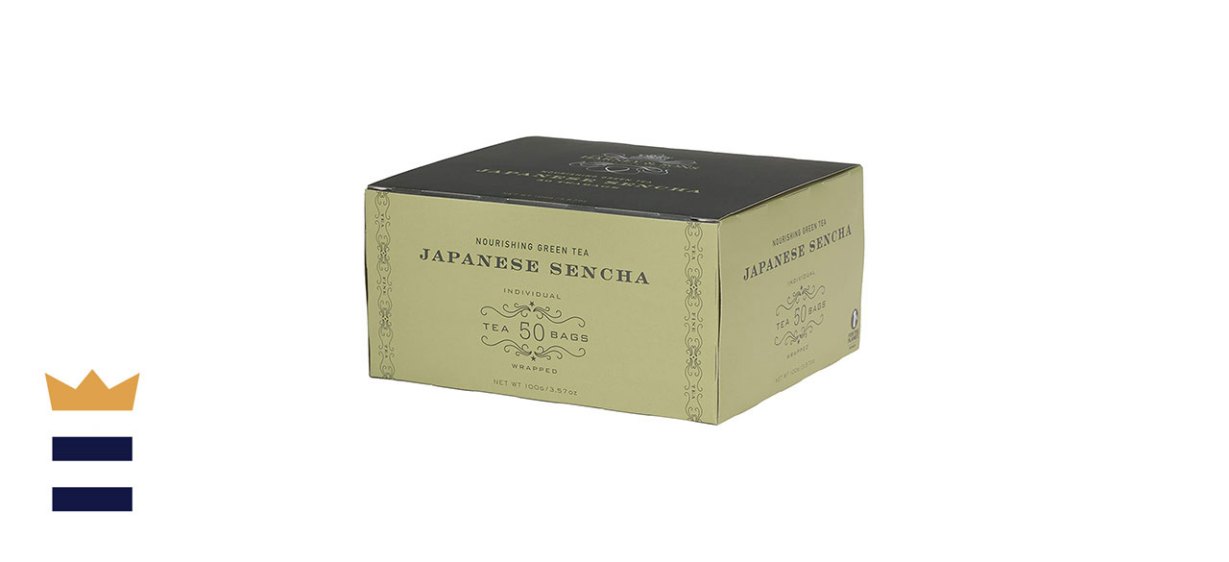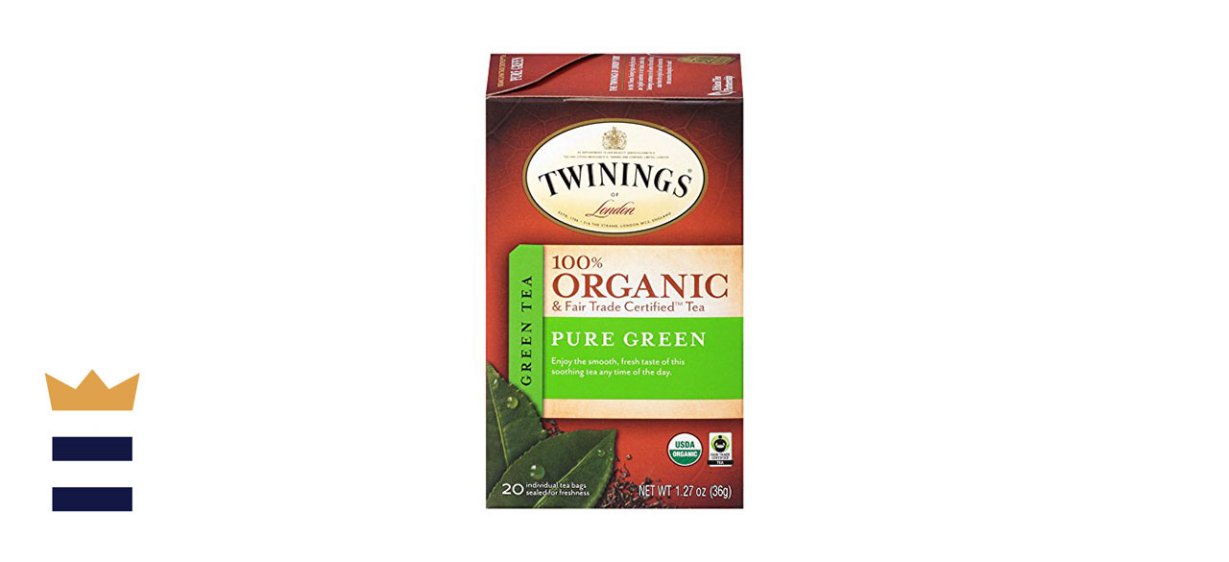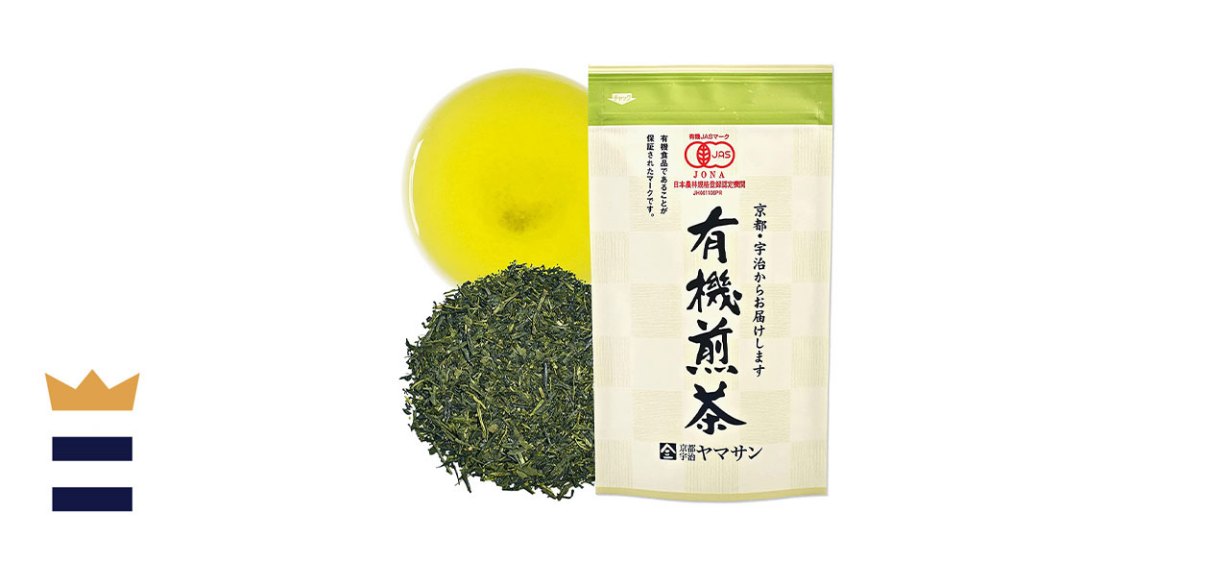Which green tea is best?
Green tea is the fresh, non-oxidized leaves of the tea plant, picked at the height of their verdant glory. Picking tea before it has oxidized imparts it with a lighter more vegetal taste that is herbal in flavor and feel. Although it can contain as much if not more caffeine than black tea, the best green teas provide a mellow energetic boost that provides a counterpart to black tea’s frenetic rush.
If you’ve never tried green tea before, Harney & Sons Japanese Sencha Green Tea is a good place to start.
What to know before you buy green tea
Tea bags vs. loose vs. powdered
Green tea is available in many forms, and which you choose depends on when and how you are most likely to prepare it.
- Tea bags: These are the most convenient option and produce the most consistent results. But tea bags can be stale.
- Loose tea: Loose tea requires strainers or reusable bags, but it allows you to customize the intensity of your tea and may work better for cold brewing.
- Powdered tea: Powdered tea is also called matcha. It is strong and bitter, and it requires a special whisk (and some matcha know-how) to create the perfect cup.
Type of green tea
There are many varieties of green tea, each with its distinct flavors and characteristics.
- Sencha: This Japanese variety is the most common type of green tea and is available in two styles (the lightly-steamed asamushi and its heavier counterpart fukamushi). The flavor of sencha is savory and light, with grassy notes of pine and salt.
- Longjing: Originating in China, longjing tea is roasted by hand to create a sweet flavor that tastes mildly of chestnuts. It’s expensive, so seek out spring-harvested tea that has short, fat leaves that are pale green or yellow.
- Bilochun: Bilochun is another green tea from China. It’s more affordable and tastes slightly nutty. Taiwanese biluochun has hints of sweet pineapple coming from fat leaves.
- Gyokuro: The secret to this Japanese green tea’s flavors of seaweed and dashi lies in its cultivation. The tea is grown in shade for the last six weeks, forcing the plant to produce extra nutrients to stay alive. It’s an expensive tea that is best served in small quantities.
- Laoshan: Laoshan is a smooth, affordable Chinese green tea that has a silky smooth texture and mild flavor of spring peas.
- Genmaicha: Rounding out the list, genmaicha is the working class’s daily drink. It’s sencha tea with added sorghum or puffed rice to bulk it up. The flavor is not complex, but it’s great as a digestive, refreshing tea.
What to look for in a quality green tea
Organic
Organic green teas are produced without chemicals or fertilizers. This results in a clean tea with a pure flavor.
Clear region of origin
Because green teas can differ so much in their flavor (and price), look for a clear region of origin indicated on the package. This provides information on what to expect in terms of taste and texture.
Chemical-free tea bags
If you choose tea bags, look for companies that use chemical-free tea bags. Chemical-free bags are good for the planet and do not impart an off-taste when dipped into hot water.
Sustainable packaging
Sustainable packaging (i.e., recycled cardboard and paper and no plastic) is standard with the best green teas. Look for companies that have taken the climate pledge to reduce carbon emissions in their delivery, too.
How to brew green tea
Follow these steps to brew the perfect cup of green tea.
- Heat water to no more than 185 degrees (boiling water extracts bitter flavors from green tea).
- Heat your mug by rinsing with hot water.
- Add tea leaves or a tea bag.
- Steep the tea for three full minutes.
- Strain the tea leaves if using, then sweeten if desired and enjoy
How much you can expect to spend on green tea
Across varieties, tea format and quantity, expect to spend $5-$14.
Green tea FAQ
Does green tea have health benefits?
A. A review of studies in 2010 found that green tea had potential benefits to lower blood pressure, reduce the chances of stroke, manage weight and reduce cardiovascular disease. Since then, green tea has also been shown to reduce blood sugar levels, lower the risk of Parkinson’s disease and decrease the chance of colorectal cancer.
How much green tea can you drink per day?
A. In order to get the potential health benefits of green tea, and based on the results of research, the optimal amount of green tea to consume is three to five cups a day. Green tea is caffeinated, so if you have concerns about adding caffeine to your diet, talk to your doctor.
What’s the best green tea to buy?
Top green tea
Harney & Sons Japanese Sencha Green Tea
What you need to know: This is one of the traditional teas of Japan and a good example of complex flavor.
What you’ll love: This pack of 50 tea bags contains high-quality sencha from the Shizuoko province of Japan. It’s handpicked in the spring for a light, floral taste with notes of spinach and toasted bread.
What you should consider: Some green tea purists found it weak, while those new to green tea did not like the grassy, vegetal taste.
Where to buy: Sold by Amazon
Top green tea for the money
Twinings of London Organic and Fair Trade Certified Pure Green Tea Bags
What you need to know: Each box in the six-pack of tea contains 20 individually-wrapped tea bags.
What you’ll love: Harvested from the Jiangxi province in China, this sencha is blended with tea from India. This combination of high-elevation teas and those harvested closer to rivers and plains makes for a delicate toasted flavor. This tea is Fair Trade-certified and USDA organic.
What you should consider: Some people found this to be bitter.
Where to buy: Sold by Amazon
Worth checking out
What you need to know: This is loose tea that is more subtle and milder than some other options.
What you’ll love: Loose tea allows you to tailor the strength of the tea to your taste. This tea is grown without chemicals or fertilizers and meets strict international organic standards. This is also delicious when brewed with cold water.
What you should consider: Some tea drinkers found this relatively flat and flavorless.
Where to buy: Sold by Amazon
Sign up here to receive the BestReviews weekly newsletter for useful advice on new products and noteworthy deals.
Suzannah Kolbeck writes for BestReviews. BestReviews has helped millions of consumers simplify their purchasing decisions, saving them time and money.
Copyright 2022 BestReviews, a Nexstar company. All rights reserved.




